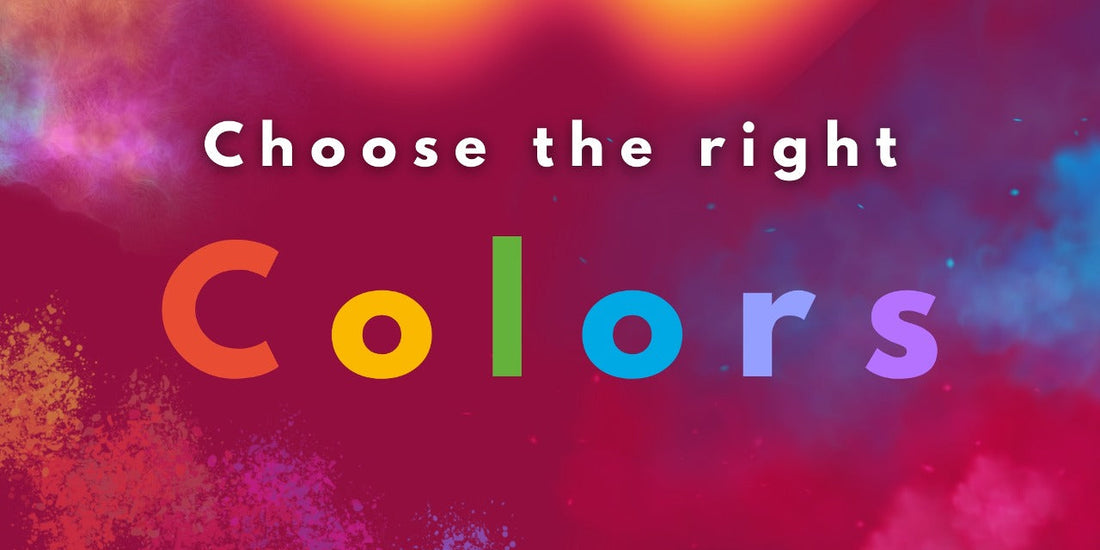Coloring is more than a great hobby to enjoy—it's a stress-relieving activity that can relax, welcome mindfulness, and promote joy. As relaxing as color is to do, though, even the color you use plays a role in defining your experience. The color you work with can stir up emotions, sharpen focus, and even affect mood. Whether you color landscapes, mandalas, or abstract patterns, color psychology and learning to pick just the right colors can elevate your coloring to new heights. Let's begin to learn to choose the right colors that promote creativity, calm, and emotional wellness.
 Choose the right colors
Choose the right colors
The Psychology of Color
Colors have a strong influence on our mood, our minds, and our behavior. Color psychology, a theory that has been utilized for many decades, is utilized in various aspects of design, marketing, and art. In applying it to coloring, color psychology can guide you to produce a more emotional and satisfying experience. Here is a quick guide to how various colors can affect your mood:
- Red: With its association with energy, passion, and excitement, red is a great color to apply in dynamic, bold work.
- Blue: Blue is associated with calmness and serenity. Blue is utilized to calm oneself and is a great color to apply to produce a calm mood.
- Yellow: Yellow is a symbol of happiness, optimism, and creativity. Yellow is utilized to uplift one's mood and produce a cheerful feel to one's colorings.
- Green: Green is a symbol of nature, growth, and balance. Green is a calm, refreshing color utilized to produce a natural feel.
- Purple: Purple is a symbol of spiritualism, luxury, and creativity. Purple is utilized to produce a mysterious feel.
- Orange: Orange is a warm color that is a combination of red's energy and yellow's cheerfulness. Orange is utilized to produce a vibrant feel to one's work.
- Pink: Pink is a symbol of love, lovefulness, and playfulness. Pink is utilized to produce a nurturing feel.
- Black and Gray: Black and gray colors can produce a sophisticated, contrasting feel to one's work.
- White: White is a symbol of simplicity, purity, and clarity. White is utilized to produce a minimalist feel.
By learning about the emotional and psychological impact of colors, you can choose colors that sustain or support your mood or the mood that you wish to produce.
Tips for Choosing the Right Colors
Choosing the right colors for your coloring project doesn’t have to be complicated. Here are some practical tips to help you create a harmonious and emotionally satisfying color palette:
1. Consider the Theme of Your Design
The subject matter of your coloring page can guide your color choices. For example:
- Nature Scenes: Use earthy tones like greens, browns, and blues to reflect the natural world.
- Mandalas: Experiment with vibrant, contrasting colors to highlight the intricate patterns.
- Abstract Designs: Play with bold, unconventional color combinations to express creativity and individuality.
2. Think About Your Mood
Are you looking to relax, energize, or express yourself? Choose colors that align with your emotional state or desired outcome:
- For relaxation, opt for cool tones like blues, greens, and purples.
- For energy and excitement, go for warm tones like reds, oranges, and yellows.
- For balance and harmony, combine complementary colors (e.g., blue and orange, purple and yellow).
3. Use a Color Wheel

A standard color wheel
A color wheel is a helpful tool for understanding color relationships and creating harmonious palettes. Here are some basic color schemes to try:
- Monochromatic: Use different shades of the same color for a cohesive, calming effect.
- Analogous: Choose colors that are next to each other on the color wheel (e.g., blue, blue-green, and green) for a harmonious look.
- Complementary: Pair colors that are opposite each other on the color wheel (e.g., red and green) for a bold, dynamic contrast.
- Triadic: Select three colors that are evenly spaced on the color wheel (e.g., red, yellow, and blue) for a vibrant, balanced palette.
4. Experiment with Shading and Blending
Adding depth and dimension to your coloring can make the experience more engaging. Try shading with darker tones of the same color or blending two colors together for a gradient effect. This technique can bring your designs to life and enhance the meditative quality of coloring.
5. Trust Your Intuition
While color theory can be helpful, there’s no right or wrong way to choose colors. Trust your instincts and go with what feels right to you. Your personal preferences and emotional responses are the most important factors in creating a satisfying coloring experience.
6. Start with a Limited Palette
If you’re feeling overwhelmed by too many color choices, start with a limited palette of 3–5 colors. This can help you focus and create a cohesive design. As you gain confidence, you can experiment with more complex color combinations.
7. Consider the Emotional Impact of Your Choices
Think about how your color choices might influence your mood or the overall feel of your artwork. For example:
- Warm colors (reds, oranges, yellows) can create a sense of warmth and energy.
- Cool colors (blues, greens, purples) can evoke calmness and tranquility.
- Neutral colors (black, white, gray) can add sophistication and balance.
How Colors Enhance the Coloring Experience
Choosing the right colors can transform your coloring experience in several ways:
1. Boosts Emotional Well-Being: Colors can evoke specific emotions, helping you process feelings and improve your mood.
2. Encourages Creativity: Experimenting with different color combinations can spark new ideas and inspire artistic expression.
3. Promotes Relaxation: Soft, cool tones can create a calming atmosphere, making coloring a soothing activity.
4. Enhances Focus: Selecting and blending colors requires concentration, which can help quiet the mind and promote mindfulness.
5. Adds Personal Meaning: The colors you choose can reflect your personality, emotions, or intentions, making your artwork uniquely yours.
Conclusion
Choosing the right colors is an essential part of the coloring experience. By understanding the psychology of color and experimenting with different palettes, you can create artwork that not only looks beautiful but also resonates with your emotions and intentions. Whether you’re seeking relaxation, creativity, or self-expression, the colors you choose can enhance your journey and make coloring a truly enriching activity. So, grab your coloring tools, explore the world of color, and let your creativity flow!
To read more articles about coloring, pay a visit to Trending Coloring!

